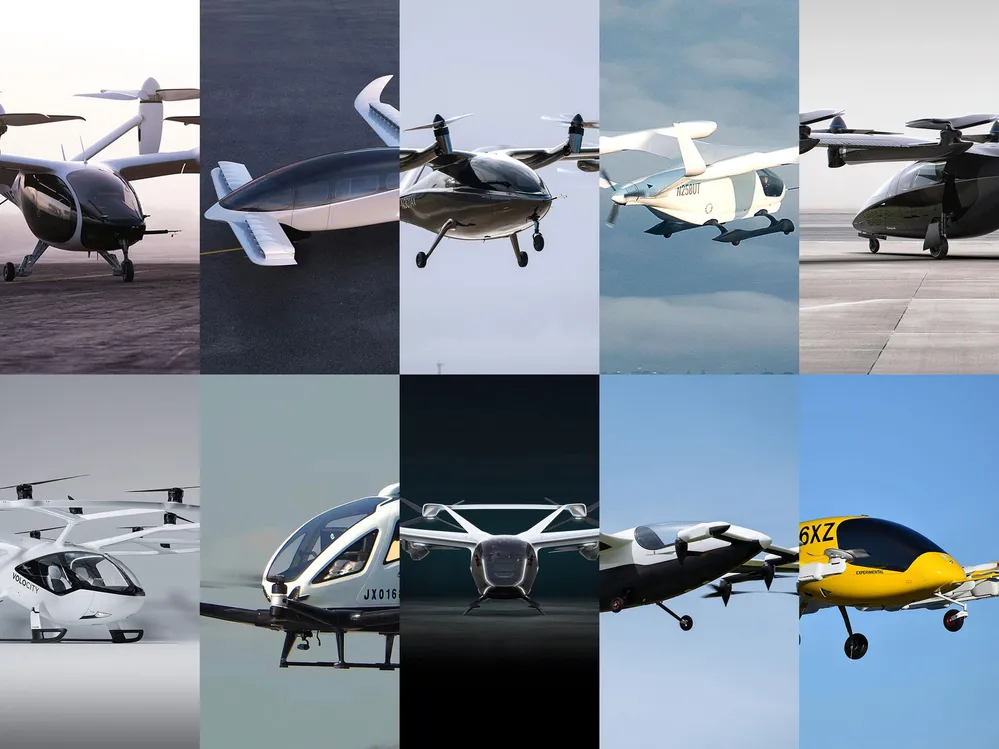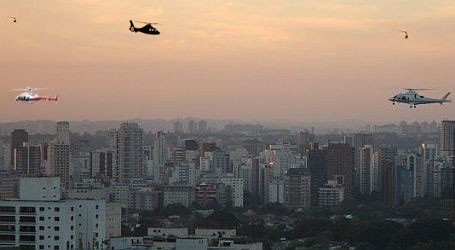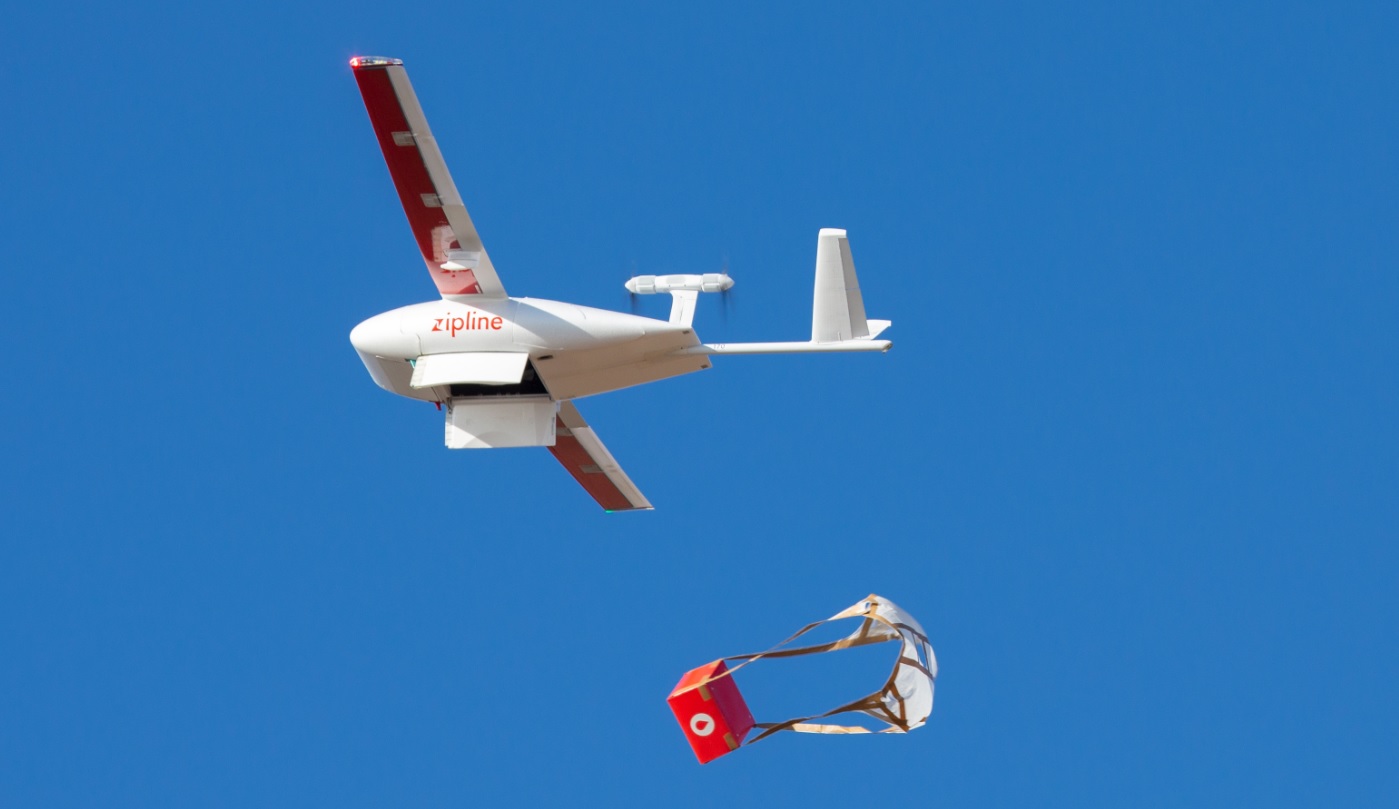As our cities become ever more crowded, surface transport such as cars, vans and motorcycles take up an increasing amount of space, producing more congestion, more noise, more pollution, and more safety hazards. Could electrically powered air mobility provide a lift off towards a cleaner, quieter, less hectic and more sustainable model of urban mobility?
For the first time in history, more people now live in urban than in rural areas. And over the next three decades or so, global population growth is expected to take place almost exclusively in the world’s cities and towns. According to the UN, the number of people living in cities is expected to grow from approximately 4.4 billion today to around 6.7 billion in 2050[1].
Add to this the increasing rate of global private car ownership, particularly in high growth markets like China and India, plus increasing investment in public transport infrastructure such as trains, trams and buses, and our urban environments look set to be busier and more congested than ever before. Even if green mobility solutions like electric cars, buses or trams can help to control CO2 emissions, they’re as much to blame for the congestion and noise as any gas-guzzler.

Lifting people and goods up into the empty skies and away from our busy urban centers with near-silent electric vertical take-off and landing craft (eVTOL) would transform our cities, making them more peaceful, greener and safer.
Outlying rural communities, up to 50 miles from major population centers, could become more convenient places to live, no matter the state of the roads in between. People will be able to live where they want, rather than where they have to. Isolated communities could become more connected, and benefit from the easier delivery of medical and food supplies.
In a world such as ours, where the wheeled transport paradigm dominates, it is easy to think of alternative solutions like these as sci-fi fantasy; unrealistic dreams that could never take hold. But look a little closer and you find that the technology for many electric flight applications is already available with more being developed and the economic model is within reach. In fact, research by Morgan Stanley[2] predicts a US$ 9 trillion market in eVTOL transport by 2050, overtaking surface transport, and confidently states that it’s not a question of if air mobility will come to dominate, but when.

Transporting people

Flying taxis are already part of the everyday trip to work for hundreds of people in the world’s most congested cities.[3]
Wealthy commuters coming into São Paulo from the Brazilian countryside, or between Hong Kong and Macau, or hopping from artificial island to skyscraper in Dubai, pay thousands of dollars to rise above the traffic jams and sail through the skies to their destinations.
Now, advancing technology offers the possibility of mass transit above the roads in eVTOL craft at prices that will be far more accessible to most people.
Offered the prospect of flying to work many people are still hesitant . . . at the moment, but research by McKinsey[4] has found that reluctance decreases as the congestion on the roads increases. India, which suffers from worse traffic than almost any other country, is most receptive to the idea of air mobility, with between 31% and 47% of respondents saying they would be prepared to try it, depending on the situation, with commuting, business trips and airport transfers being the most popular.

The Jameel Investment Management Company (JIMCO) is one of a number of major investors helping to push forward the boundaries of what is possible in this exciting sector. Alongside long-time Abdul Latif Jameel partner Toyota Motor Corporation, Intel Capital and JetBlue Technology Ventures, it was an early investor in California-based JOBY Aviation, one of the most advanced companies building a personal eVTOL. Other investors in the company include Uber and Capricorn Investment Group, (major backers of Tesla and SpaceX).
The investment is in line with JIMCO Technology Fund’s approach of making strategic investments in the future of mobility. The Jameel Family has a strong track record as a value-adding investor – supporting innovative start-ups in the evolving mobility industry, and by bringing long-standing regional expertise and access to a global network of partners.
The Joby eVTOL is designed to carry four passengers and a pilot at speeds of more than 200mph over more than 100 miles, for use as a rapid shared taxi. Joby was the first company to be certified for airworthiness by the US Air Force, giving it a great advantage in being able to test its technology in flight and in 2021, completed testing with NASA.

Advanced as Joby is, it is far from the only company racing to produce transport powered by batteries. It is joined by others such as aerospace giant Embraer’s subsidiary Eve; Volocopter, based in Germany; the French consortium Airbus’s CityAirbus NextGen program, and the Israeli startup Urban Aeronautics, to name just a few among the dozens of contenders. These are the leaders that are showing the way in transforming the transport of people.
Transporting goods
It is not only the transport of people that could reap the benefits of new air mobility solutions. Our roads are also clogged with vans and scooters transporting goods. Can air mobility help relieve that burden on our streets at the same time as demonstrating the utility of advance air mobility (AAM)?
The majority of the start-ups and established aviation companies currently working on AAM and eVTOL vehicles are developing solutions for personal transit. But goods, light freight and household deliveries are already showing they are excellent candidates for autonomous transport by air.

(Photo credit © Starship)
Wheeled autonomous delivery mini-vehicles made by Starship, founded in 2014, in San Francisco, are already making deliveries on a number of university campuses in the United States, and also the public streets of Milton Keynes and Northampton in the UK.
But taking to the air requires more advanced engineering and exacting safety standards.
Amazon’s Prime Air service[5] was quietly announced in 2016, but since then has still to make deliveries outside a small trial conducted in Cambridge, England.
By contrast, the good people of Banbriggan, a small town in the Republic of Ireland, just a few miles north of Dublin, however, are now getting used to coffee, pastries, vegetables and take-aways arriving with the faint whirr of rotors rather than the rattling rasps and aggressive beeps of moped riders.

Irish company Manna has been developing its drone delivery service there and in Galway to the south for several years.
Now, they are preparing to scale up across Europe, where they already have flight licenses.
They deliver in three minutes or less of flight time and can make ten deliveries per hour, as opposed to the scooter rider’s two or three.
Zipline, from San Francisco, uses small autonomous planes it calls zips rather than helicopters to make its deliveries.

Its drones deliver blood and medical supplies to 350 medical centers in rural Rwanda[6], often places that would be inaccessible to cars for much of the year.
Seventy-five per cent of the blood supplies in Rwanda delivered outside the capital, Kigali, are now completed by air in one of Zipline’s unpiloted craft, and deliveries can be made in 30 minutes that would have taken several days by road, if they had been possible at all.
The company is expanding across Africa and, thanks to a contract with Walmart, the USA.
Breakthrough on batteries
Battery technology is still the limiting factor on how much a delivery drone can carry, and for what distance. Payloads of more than two kilos are still beyond the capability of most models, although Flying Basket in Italy is experimenting with 100 Kg loads over distances of up to 10 Km, but 2 Kg covers the great majority of packages and prepared food deliveries on the roads today.
Tesla’s Elon Musk has estimated that battery energy density must exceed 400 watt-hours per kilogram to make eVTOLs economically feasible[7]. The current Tesla Model 3’s batteries achieve 260 watt-hours per kilogram[8]. Researchers at the National Institute for Material Science in Japan have built lithium-air batteries that hold as much as 500 watt-hours per kilogram[9], and are now working on improving the rechargeability and reliability of their technology.
Large delivery vans equipped with fleets of small and medium-sized delivery drones could potentially deliver a great number of packages with far greater efficiency than the current model of stopping the van for every drop-off. Capacious batteries in the van could assist with flash charging the drones to extend their possible flight time without having to return to the depot. Heavy freight is still decades away, but last mile logistics is a potentially huge market and could be the gateway to wider acceptance of small-scale flight.
Consumers, too, have been found to be receptive to the change. When asked about their concerns in relation to drone deliveries, less than 12% of people surveyed ranked having a person hand them their package in their top three factors, while 74% of respondents in China said they would pay extra for faster delivery by drone[10].
Infrastructure challenges
Just as is the case with electric cars, advanced air mobility will place a strain on electrical infrastructure not designed for it, but it is not an insurmountable challenge. To bring costs down so that AAM can be truly mass transit, the number of landing places in an area must be as high as possible.
McKinsey suggests three types of landing place:
- Vertihubs, which are new purpose-built structures with a large number of pads for landing and retail opportunities for the busy passenger footfall.
- Vertibases, which can be new buildings or could be extensions of existing large rooftops or car parks and have space for three landing pads and some storage space.
- Vertipods, with just one landing pad, envisaged as a personal facility on private land, or serving a remote rural location or small suburb.

Each of the bases would require charging facilities for the battery-powered eVTOLs. Flight would use more power than surface transport, but very fast charging facilities are already being developed for large trucks and buses that could charge drones enroute, so called ‘flash charging’. No existing suburban power grid could accommodate 1MW or 2MW charging plugged directly into the mains, but distributed storage facilities at each landing hub could be charged slowly over normal power lines, then discharge very rapidly into the eVTOL’s batteries. This would minimize the cost of grid upgrades and make isolated landing pods possible, extending the range of air mobility well outside city limits.
In McKinsey’s calculations, a city with 85-100 landing pads distributed around major transport hubs and outlying residential areas would require people to make approximately 2,200 trips per day – the equivalent of one per hour per pad – to allow for charges per passenger roughly in line with limousine travel at US$ 50 to US$ 75 per head.
To bring the costs down closer to current mass transit methods such as ground taxis, the network must accommodate around 10,000 trips per day – as much as one every five minutes per pad at peak times – which would be difficult to achieve considering the safety precautions that flight requires. McKinsey also highlights a number of other factors that could be critical to the mass feasibility of AAM solutions. These include the need for rapid turnaround, including flash charging of vehicles; ancillary sources of income for operators, such as retail outlets at ‘vertihubs’; public sector subsidies; modular infrastructure solutions bringing the build costs of pads down; and innovative power solutions.
As is the case with car charging hubs, for example the Gridserve electric forecourt in Essex, UK[11], dedicated solar panel clusters connected to the eVTOL hubs by private wire networks could reduce the strain on the grid and the carbon-intensive gas- and oil-powered power stations still further, making the possibility of carbon neutral air mobility a very real one, and supporting its economic feasibility.
Licence to fly
All the passenger eVTOL models that are approaching the market require human pilots[12]. No country has air traffic regulations that allow autonomous flight with humans aboard, and it is unlikely that such a service would find a ready audience at the moment, when electric flight is still an untried technology for many people.
This opens a large job market in the near future for helicopter pilots. The greater ease of use of eVTOLs over traditional helicopters allows for a larger number of people to be trained, and the short-haul nature of the technology means that flying air taxis could be a family-friendly job that allows pilots to return home after their shift and would reduce costs and create opportunities.

However, it is unlikely that a crowded urban sky will be a suitable place for amateur pilots, so few analysts look forward to a future where people own and operate their own craft. Rather, automated safety and navigation systems will control the air, doing away with human pilots altogether, cutting costs even further and increasing safety levels beyond those of current road traffic[13]. Unmanned traffic management (UTM) systems are currently in development as a collaboration between the FSA and NASA in the USA[14], aimed at controlling drones flying under 400ft.
Not a flight of fancy
With vertihubs, vertibases and vertipods, UTM, last mile freight for smaller payloads such as Manna and Zipwire, and efficient short-hop passenger eVTOLs such as Joby, air mobility technology is coming of age. The economic arguments are looking increasingly achievable, and with good planning, entrepreneurial zeal, tight control of costs and regulatory cooperation, air mobility could soon be as common as an electric car or an e-scooter. As people become used to the idea of flying rather than rolling with traditional ground transportation, concerns over safety will diminish, especially as our streets become quieter, more pleasant and more suited to pedestrian traffic.
Fueled by the resources and commitment of far-sighted investors like JIMCO, technology challenges such as battery power density and renewable power sources will continue on their upward trajectory to the point where even heavy payloads and container freight can be shipped by air, and the advanced air mobility revolution will be complete.
Over the next 30 years, our streets could be transformed into the peaceful, clean and quiet places we all want them to be, and commuting will be faster wherever we choose to live.
We can hardly wait!

[1] https://www.un.org/development/desa/en/news/social/urbanization-expanding-opportunities-but-deeper-divides.html
[2] https://assets.verticalmag.com/wp-content/uploads/2021/05/Morgan-Stanley-URBAN_20210506_0000.pdf
[3] https://www.mckinsey.com/industries/travel-logistics-and-infrastructure/our-insights/taxiing-for-takeoff-the-flying-cab-in-your-future
[4] https://www.mckinsey.com/industries/aerospace-and-defense/our-insights/up-in-the-air-how-do-consumers-view-advanced-air-mobility
[5] https://www.amazon.com/Amazon-Prime-Air/b?ie=UTF8&node=8037720011
[6] https://flyzipline.com/global-healthcare
[7] https://electrek.co/2020/08/25/tesla-elon-musk-batteries-enabling-electric-aircraft-coming/
[8] https://www.forbes.com/sites/jamesmorris/2021/09/04/this-company-has-the-battery-technology-to-beat-tesla/?sh=2582807e48f3
[9] https://www.sciencedaily.com/releases/2022/01/220120140724.htm
[10] https://www.mckinsey.com/industries/aerospace-and-defense/our-insights/up-in-the-air-how-do-consumers-view-advanced-air-mobility
[11] https://www.gridserve.com/braintree-overview/
[12] https://www.mckinsey.com/industries/travel-logistics-and-infrastructure/our-insights/commercial-drones-are-here-the-future-of-unmanned-aerial-systems
[13] https://www.mckinsey.com/industries/travel-logistics-and-infrastructure/our-insights/taxiing-for-takeoff-the-flying-cab-in-your-future
[14] https://www.faa.gov/uas/research_development/traffic_management/media/FAA_NASA_UAS_Traffic_Management_Research_Plan.pdf
Related Insights

























